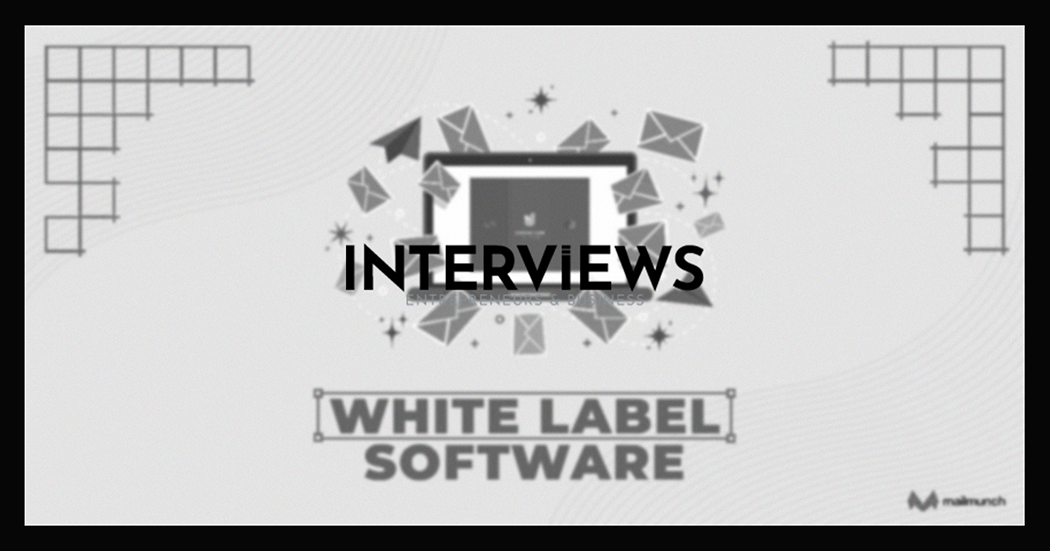Unveiling White Label Apps: Your Secret Weapon in the App Marketplace (Without Breaking the Bank)
Have you ever wanted to launch your own app? Coding and high development costs can be daunting. There’s a secret weapon in the digital world: White Label Apps. These are pre-built applications just needing your brand’s touch.
So, what is a white label app? Picture a skilled chef making a cake base. They sell this base to other bakers who decorate it and sell it as their own creation. That’s a white label app. It’s a generic application made by a tech company that you can rebrand and resell.
Decoding the Cost of White Labeling: Is it Budget-Friendly or Bank-Breaking?
Let’s discuss money. Building an app from scratch can feel like dumping money into a pit. White labeling is the clever shortcut here. The cost varies. Depending on features and app complexity, you can spend from a few hundred to a few thousand dollars. For a simple white-label solution, you might invest between $2,000 and $10,000. If you want more advanced features, it could go up to $70,000.
Are White Label Apps Actually Good? Legitimacy and Quality Check
Are these white-label apps good? Yes! They are created and maintained by experienced developers, ensuring quality and reliability. You can use their expertise without hiring anyone. This way, you offer a great app experience while avoiding app development hassles. It’s like outsourcing.
Cash in on White Labeling: Making Money the Smart Way
Can you make money with white labeling? Definitely! White labeling saves costs and creates profit opportunities. It’s a discreet business model, especially if you want a SaaS side hustle without big tech investments. Many are already succeeding. People are using white-label solutions for virtual receptionist services and making profits.
The Ultimate Guide to Selling White Label Software Like a Pro
Ready to join the white-label software trend? Here’s your guide:
1. Know Your Audience (and Their Software Cravings)
- Find your niche: Identify your target industry and the software you will offer.
- Demand Research: What software solutions are people searching for and their pain points?
- Tap Your Network: Reach out to existing clients and discover unmet needs.
2. Partner with a Provider You Can Trust (Not Just the Flashiest Website)
- Provider Deep Dive: Research potential providers. Look for solid reputations, proven track records, and testimonials.
- Feature Face-Off: Compare software quality, features, and scalability.
- Negotiate Like a Pro: Don’t accept the first price. Ensure the terms are fair.
3. Brand It Like You Built It (Even Though You Didn’t)
- Brand Magic: Create a distinct brand. Develop a name and logo that sets you apart.
- Value Proposition Power: Clearly state what benefits your software offers. Why should customers choose you?
- Pricing Psychology: Set competitive yet profitable prices.
- Sales Strategy Blueprint: Plan how to reach your customers through marketing or events.
4. Market Like Your Business Depends On It (Because It Does)
- Website Wow-Factor: Build a professional, engaging website that displays your brand.
- Social Media & Content Blitz: Engage on social media and create valuable content to establish expertise.
- Paid Ads Power: Use targeted ads to reach specific audiences effectively.
- SEO Secrets: Optimize your website for search engines to increase organic reach.
5. Customer Service That Turns Clients into Raving Fans
- Team Training Time: Train your team on the software and branding.
- Communication Channels Clear: Make it easy for customers to reach you through various channels.
- Support Superstars: Provide quick and effective support to build trust.
- Feedback Fuel: Monitor feedback to improve your offerings.
Key Considerations: Don’t Skip These!
- Legal Lowdown: Know your white-label agreement well. Understand legal responsibilities.
- Scale-Up Strategy: Choose a provider that can grow with you to avoid limitations.
- Profitability Pulse Check: Analyze costs and prices for true profitability.
- Smooth Onboarding System: Create an efficient onboarding process for clients.
- Marketing Muscle: Invest in marketing to drive customer acquisition.
White Label Mobile Apps: Apps That Feel Truly Yours
Want to enter the mobile-first world? White label mobile apps are the way. These native applications run on Apple iOS or Google Android. While they are developed by a third party, you can brand them as your own. Customers can download your app directly from the app stores – very exciting!
Is White Labeling Legal? The Green Light on White Labeling
Wondering about legality? Yes, white labeling is legal and widely practiced. Companies rebrand existing products under their name. To stay compliant, follow regulations and respect intellectual property laws. Have a formal agreement with the developer covering branding and sales terms.
Profitability Powerhouse: Why White Labeling Can Be a Goldmine
Is white labeling beneficial? Often, yes. It lets you offer products without heavy upfront costs. You bypass labor-intensive R&D. This approach expands your offerings, increases revenue, and attracts more customers. It’s like adding a product line without new production.
White Labeling: The Core Concept Simplified
Simply put, white labeling is this: Company A makes a product. Company B (you) buys it, brands it, and sells it as their own. You aren’t involved in manufacturing but focus on branding and sales, leveraging another’s expertise.
Real-World White Label Examples: Seeing is Believing
Want real examples of white labeling? Here are some to inspire you:
- WhiteFlag App: An app connecting those facing mental health challenges.
- White Label Delivery: Provide branded delivery services without being tied to third-party apps.
- White Label Dating Platforms: Create your own dating site with design tools and payment processing.
- Cosmetics: Launch a lipstick line by sourcing from an existing manufacturer.
- Electronics & Household Goods: Many companies use white labeling to provide branded electronics.
- everyday products you buy are actually white-labeled.
White Label vs. Private Label: Know the Difference
These terms often get mixed up. Here’s the key difference:
- White Label: Generic products sold to multiple retailers. Each retailer brands and prices them for their own markets. This is a wholesale approach.
- Private Label: Products made exclusively for one retailer, like AmazonBasics. The retailer can modify the product as needed.
How White Label Deals Actually Work: The Nuts and Bolts
White label deals are simple. You use another company’s already made product or service. You apply your branding to make it look like your own. This method lets you offer high-quality solutions without spending time and money on in-house development or manufacturing.
Top White Label Software Platforms to Explore (in 2025 and Beyond)
Looking for platforms to kickstart your white-label journey? Consider:
- Mailmunch: For email marketing and automation.
- SocialPilot: For social media automation.
- Simvoly: For building websites and sales funnels.
- PPC Ninja: For white-labeling your Pay-Per-Click advertising services.
- Rankur: For managing your online reputation.
- SalesPype: For automating customer relationship management.
- WotNot: For building chatbots to engage visitors.
White Label SEO: Outsourcing Expertise, Keeping Your Brand
Want to offer SEO services without being an expert? White label SEO helps. You partner with an SEO agency. You provide client details. They handle all tasks – audits, keyword research, strategy, technical SEO, on-page optimization, and link building. You present results under your brand.
Starting Your White Label Empire: A Step-by-Step Guide
Ready to start your own white-label business? Here’s a simple roadmap:
- Market Research First: Find a high-demand niche with low competition. Less crowded means more opportunity.
- Supplier Scouting: Find reliable manufacturers for quality products. Quality matters.
- Brand Building Bonanza: Create a strong brand that stands out.
- Business Structure Setup: Get legal and operational aspects in order. Don’t skip important steps.
- Launch and Market: Release your products and begin marketing them!
White Label: Reselling with a Brand Boost
Simply put: white-labeling means reselling software products and services under your own brand name. It’s reselling but with a unique touch.
Apple App Store Costs: A Quick Heads-Up for App Aspirants
Thinking of publishing your white-label app on the Apple App Store? Remember the fee. You must register as an Apple Developer. The Apple Developer Program costs $99 annually. For the Enterprise Program, it’s $299 annually.
Building an App for Free? The No-Code Revolution
You can build an app for free. No-code platforms are changing app development. Platforms like Appy Pie, Bubble, and BuildFire let you create apps using drag-and-drop tools. You don’t need coding skills. Many offer free trials to start. While white-label apps give rich features, no-code tools are great for simple ideas.
White Label Rules of the Game: Play Fair, Stay Legal
White labeling is legal, but it’s not a free-for-all. You must follow rules. Rebranding and reselling are fine if you respect regulations and intellectual property laws. Be cautious with trademarks and patents. Avoid infringing on existing brands or technologies. Ensure you are on solid legal ground.
Mastering the Art of Selling White Label Products
Want to excel in selling white-label products? Here’s your success checklist:
- Niche Down & Product Up: Research niches. Choose products that resonate with your audience. Think cosmetics or electronics.
- Supplier Superstars: Partner with reliable suppliers for quality products that fit your brand.
- Brand Brilliance: Develop a unique brand identity. Invest in a name, logo, and packaging that appeals.
- Sales Channel Strategy: Create an online store using platforms like Shopify. Market aggressively through social media, email, and ads.
- Legal & Ops Check: Respect intellectual property. Comply with safety and labeling laws. Provide great customer service.
Key Benefits of White Labeling: Why It’s a Smart Move
- Lower Upfront Costs: Avoid huge investments in manufacturing and product development. Less risk to start.
- Scalability Superhero: Grow product lines quickly without high capital expenditures.
- Higher Profit Margins Potential: Focus on sales, not production costs. This can boost profit margins.
Grey Label vs. White Label: Understanding the Nuances
Don’t mix up grey label with white label. White label means full customization to make the platform completely yours. Grey label is different. It may show some original branding to a degree. It’s more of a co-branding approach.
White Labeling Benefits: A Quick Recap of the Upsides
- Scalability: Easily expand your product line.
- Higher Profit Margins: It can be more profitable.
- Revenue Boost: Increase revenue streams.
- Customer Magnet: Attract customers with wider offerings.
White Labeling Drawbacks: The Potential Downsides
- Pricing Pressures: Limited pricing control due to multiple retailers selling similar products. Competition can push margins down.
- Loyalty Challenges: Building strong customer loyalty can be tough without a unique brand presence.
The White Flag App Example: Peer Support in Your Pocket
The White Flag app shows a white-label approach in mental health. It connects people facing challenges with mental health and addiction. It illustrates how white-label solutions can create impactful apps quickly.
Other Key White Label Aspects: The Extra Details
- Brand Identity Consistency: White labeling allows you to keep your brand image across all applications.
- White Label Agreements: Agreements define permissions and protect rights between you and the provider.
- Conga’s White-Label Approach: Some providers like Conga ensure you control transaction processes in their solutions for a seamless experience.
- White Label APIs: A white label API acts as a ready-made template. It connects you to specific service providers, allowing you to offer those services under your brand.





